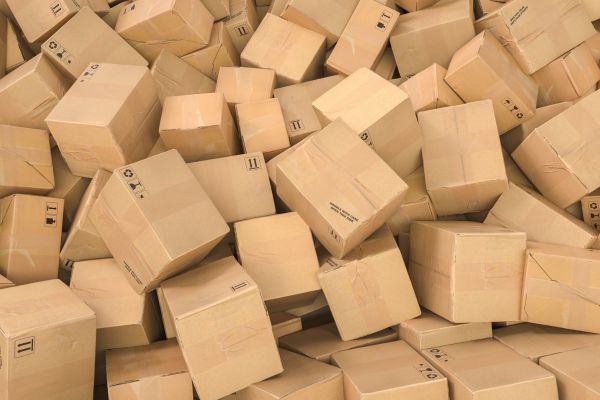Black Friday, the annual shopping extravaganza that heralds the holiday season, is synonymous with frenzied crowds, blockbuster deals, and a collective consumerist zeal. So why is black Friday bad? the problem is that beyond the excitement and bargain-hunting, lies a less-discussed narrative: the substantial environmental impact of this retail phenomenon. As millions embark on a quest for discounted goods, the repercussions extend far beyond crowded malls and bustling online marketplaces.
From clothing and electronics to seasonal decorations, Black Friday’s emphasis on fleeting consumer trends intensifies the cycle of consumption and disposal, highlighting the urgent need for a more sustainable approach to our shopping habits.
This article explores the environmental implications of Black Friday sales, shedding light on the hidden costs of our insatiable appetite for consumption.
The Production Cycle: From Resources to Goods
At the heart of the environmental impact of Black Friday lies the intricate web of production that transforms raw materials into the myriad products lining store shelves and online inventories. The quest for discounted items on this day fuels heightened demand, propelling manufacturers to ramp up production to meet consumer expectations. The extraction and processing of raw materials, such as metals or plastics, and the harvesting of materials like timber or cotton places a strain on natural resources, contributing to deforestation, water depletion, and soil degradation.
Plus, transporting materials and finished products across vast global supply chains involves extensive energy use and greenhouse gas emissions. From the factory floor to distribution centers and, ultimately, to retail outlets, the entire life cycle of a product involves significant energy consumption, much of which is derived from fossil fuels.
The Carbon Footprint of Express Shipping
The shift towards online shopping accentuated on Black Friday, introduces a new set of environmental challenges. While online retail offers convenience and accessibility, it also amplifies the carbon footprint associated with the transportation and delivery of goods to customers. The proliferation of express shipping options further intensifies the environmental impact, as expedited deliveries prioritize speed over efficiency.
The carbon emissions from the transportation of goods, especially when shipped individually to different households, and the high rate of returned items being shipped back to brands contribute to air pollution and climate change. Additionally, the surge in online shopping leads to an increase in the construction and operation of massive warehouses, further impacting local ecosystems and biodiversity.

Fast Fashion’s Toll
Black Friday’s impact is particularly pronounced in the fashion industry, where the demand for quick and affordable clothing leads to the proliferation of fast fashion. Brands race to offer trendy garments at rock-bottom prices, leading to a disposable culture where clothes are worn briefly and discarded rapidly. This throwaway mentality contributes to the degradation of ecosystems and amplifies the environmental toll of the textile industry.
The production of cheap, fast-fashion items involves intensive water use, chemical pollution, and energy consumption. Pesticides and fertilizers used in cotton cultivation contaminate water sources, while the dyeing and finishing processes release toxic chemicals into rivers and oceans.
The environmental consequences of fast fashion extend to the end of a garment’s life, as the disposal of textiles in landfills contributes to pollution and the release of methane gas.
Fast Technology has it’s own toll
Black Friday, also contributes significantly to the escalating problem of electronic waste or e-waste. As consumers rush to grab the latest gadgets, electronics, and tech deals, the turnover of electronic devices skyrockets. The allure of upgrading to the latest model or securing a seemingly unbeatable deal prompts countless individuals to discard perfectly functional electronics, fueling the e-waste epidemic.
From smartphones and laptops to gaming consoles and smart home devices, the rapid turnover of electronic goods on Black Friday results in a surge of outdated and discarded devices, exacerbating the challenges associated with e-waste management.
The impact of Black Friday on e-waste extends beyond the sheer volume of discarded electronics. The push for newer, faster, and more feature-rich devices reinforces a culture of planned obsolescence, where products are deliberately designed with a limited lifespan. This strategy, often employed by manufacturers to stimulate frequent replacements, intensifies the rate at which electronic devices become obsolete, further contributing to the mounting e-waste crisis.
As the shelves are restocked with the latest models, the discarded electronics find their way into landfills or, worse! The improper disposal of electronic devices poses environmental hazards, as these items often contain hazardous materials such as lead, mercury, and cadmium.
Waste Generation and Disposal
Perhaps one of the most noticeable consequences of Black Friday’s consumerist frenzy is the staggering amount of waste generated. Packaging materials, often excessive and non-recyclable, contribute to the mounting burden on landfills and recycling facilities.
Beyond just packaging, the disposable culture fostered by Black Friday exacerbates waste generation. Impulse purchases, driven by limited-time offers and the fear of missing out on deals, often lead to the purchase of items that quickly lose their appeal.
Over five billion pounds of waste is generated from returns every year. It’s estimated that 80% of products purchased on Black Friday or Cyber Monday are thrown away after just one or two uses.
The “single-use” nature of many of these purchases exacerbates the problem, as items purchased on impulse or for short-lived trends quickly lose their allure and contribute to a growing pile of waste. Not to mention the carbon emissions resulting from the transportation of all these returns.

Consumerism’s Impact on Biodiversity
The relentless pursuit of consumer goods, spurred by Black Friday sales, poses a threat to biodiversity and natural ecosystems. Habitat destruction, driven by resource extraction and industrial activities, displaces countless plant and animal species. Deforestation, often associated with the production of paper and wood-based products, disrupts ecosystems and contributes to the loss of biodiversity.
The chemical pollution resulting from manufacturing processes and the disposal of products further imperils wildlife. From marine life affected by plastic pollution to terrestrial species exposed to toxic substances, the far-reaching consequences of consumerism extend to the delicate balance of ecosystems around the globe.

Addressing the Environmental Impact
While the environmental impact of Black Friday sales is undeniably substantial, there are avenues for mitigating the damage and fostering more sustainable consumption practices.
- Embrace Conscious Consumerism: Adopting a mindset of conscious consumerism involves making informed choices about the products we purchase. Prioritize items with minimal packaging, opt for durable goods with longer lifespans, and choose brands like Sabai or Eileen Fisher committed to sustainable and ethical practices.
- Support Sustainable Brands: Encourage a shift in the market by supporting brands that prioritize sustainability, ethical sourcing, and environmentally friendly practices. Choose products made from recycled materials, with transparent supply chains and a commitment to reducing their ecological footprint. You can find some great brands in our Brand Directory.
- Participate in Buy Nothing Day: Consider participating in Buy Nothing Day, an international initiative that encourages individuals to refrain from making purchases on Black Friday. Use the day to reflect on the impact of consumerism and explore alternative ways to spend time with friends and family or engage in community activities.
- Advocate for Responsible Consumption: Advocate for responsible consumption practices at both individual and societal levels. Encourage friends and family to be mindful consumers and support policies and initiatives that promote sustainable production and consumption.
- Promote Repair and Recycling: Instead of discarding items, explore options for repair and recycling. Many products can be repaired or repurposed, extending their lifespan and reducing the demand for new resources. Explore local repair services and recycling facilities in your community.
- Educate and Raise Awareness: Education is a powerful tool for driving change. Raise awareness about the environmental impact of Black Friday and consumerism, emphasizing the connection between individual choices and their collective effect on the planet. Share information through social media, community events, and conversations to inspire positive change.
In a world grappling with the challenges of climate change and ecological degradation, the choices we make as consumers play a pivotal role in shaping the trajectory of our planet’s future. By embracing conscious consumerism, supporting sustainable practices, and advocating for responsible consumption, individuals can contribute to a paradigm shift where the well-being of the planet takes precedence over momentary shopping thrills.
As we navigate the holiday season, let us reconsider the true cost of our purchases and strive for a more sustainable and harmonious coexistence with the environment we call home.














